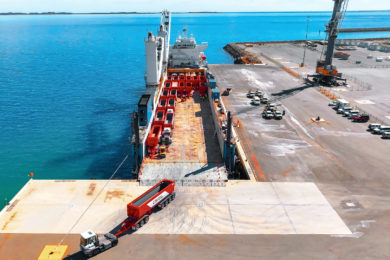Following successful commissioning of 19 Weba Chute Systems at BHP Billiton’s Groote Eylandt Mining Company (GEMCO) in Australia, Weba Chute Systems has been commissioned to carry out the FEL 3 Level chute design work for the port expansion. Alwin Nienaber, Operations/Technical Director at Weba, says that this equates to about 40% of the engineering component involved in the project, with the company currently designing six chutes at the manganese operations.
Nienaber says that based on the successful operation of the 19 chutes, as well as the company’s innovative approach to transfer point solutions, it was given the go ahead to do the necessary design work for chutes for the port expansion. “The port conveyor site is being upgraded to cater for higher capacities and transfer points are an important part of this upgrade project,” Nienaber says.
An important factor in this particular application will be the need to minimise degradation of the material. The chutes are designed taking factors such as the feed rates, height of free fall and angle of repose into account. Nienaber says that it is also necessary when designing to have access to all relevant data including the location of pulleys and the load requirement. “By determining the optimum head pulley position we are able to provide the best design configuration for each particular transfer application,” he says.
Designed around the principle of conveyed material impacting on surfaces that already contain material, the Weba chutes are configured to control the direction, flow and velocity of the calculated volume and type of material being processed. This level of material control is extended by designing the internal angle of the transfer chute to match the product flow with the belt speed. Nienaber says that by doing this it is possible to either completely eliminate or greatly reduce spillage.
Weba’s systems are custom engineering for each individual application resulting in optimum design configuration. Subsequent advantages include reduced levels of dust and noise pollution as well as reduced production losses due to fewer blockages.









